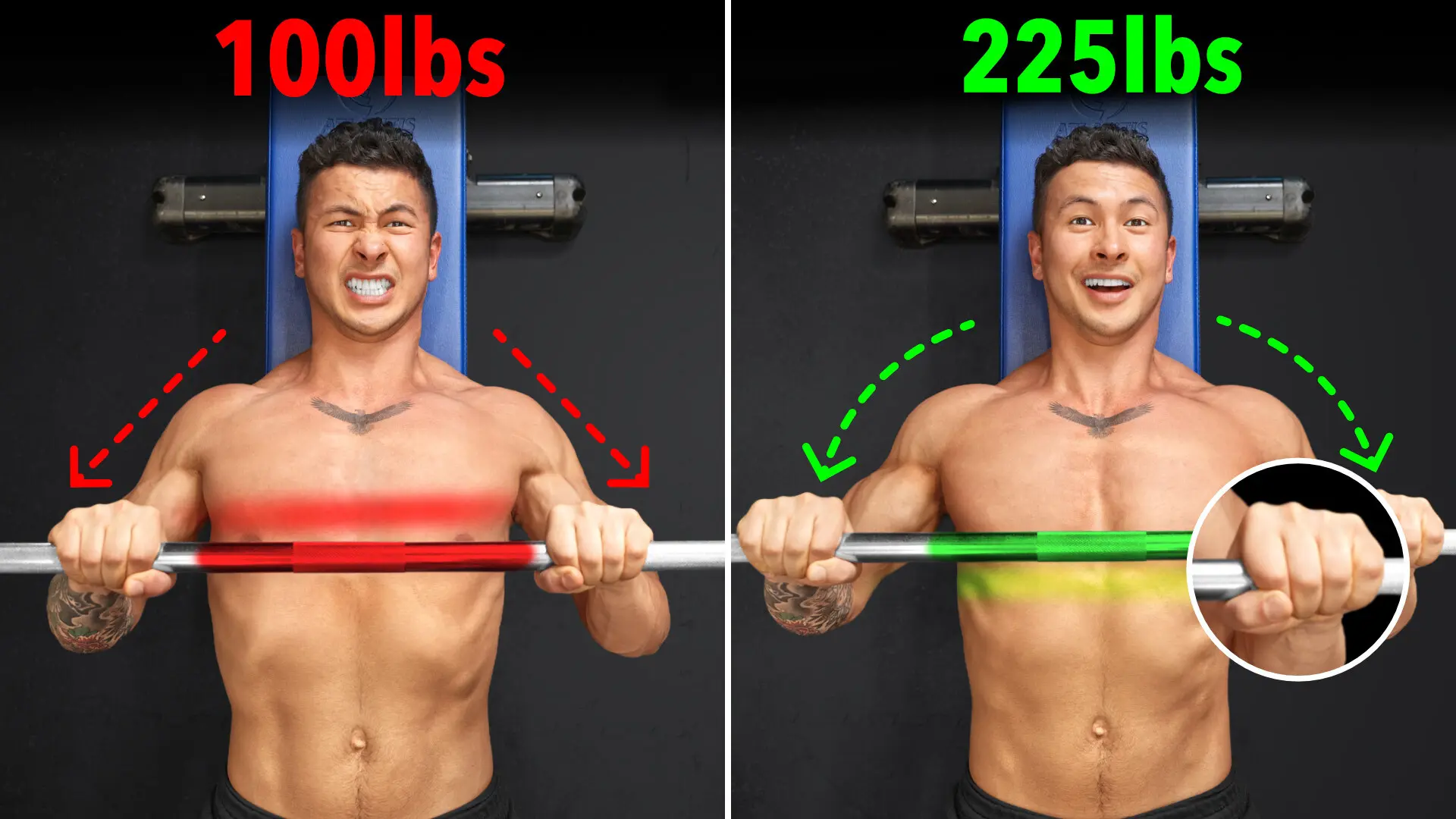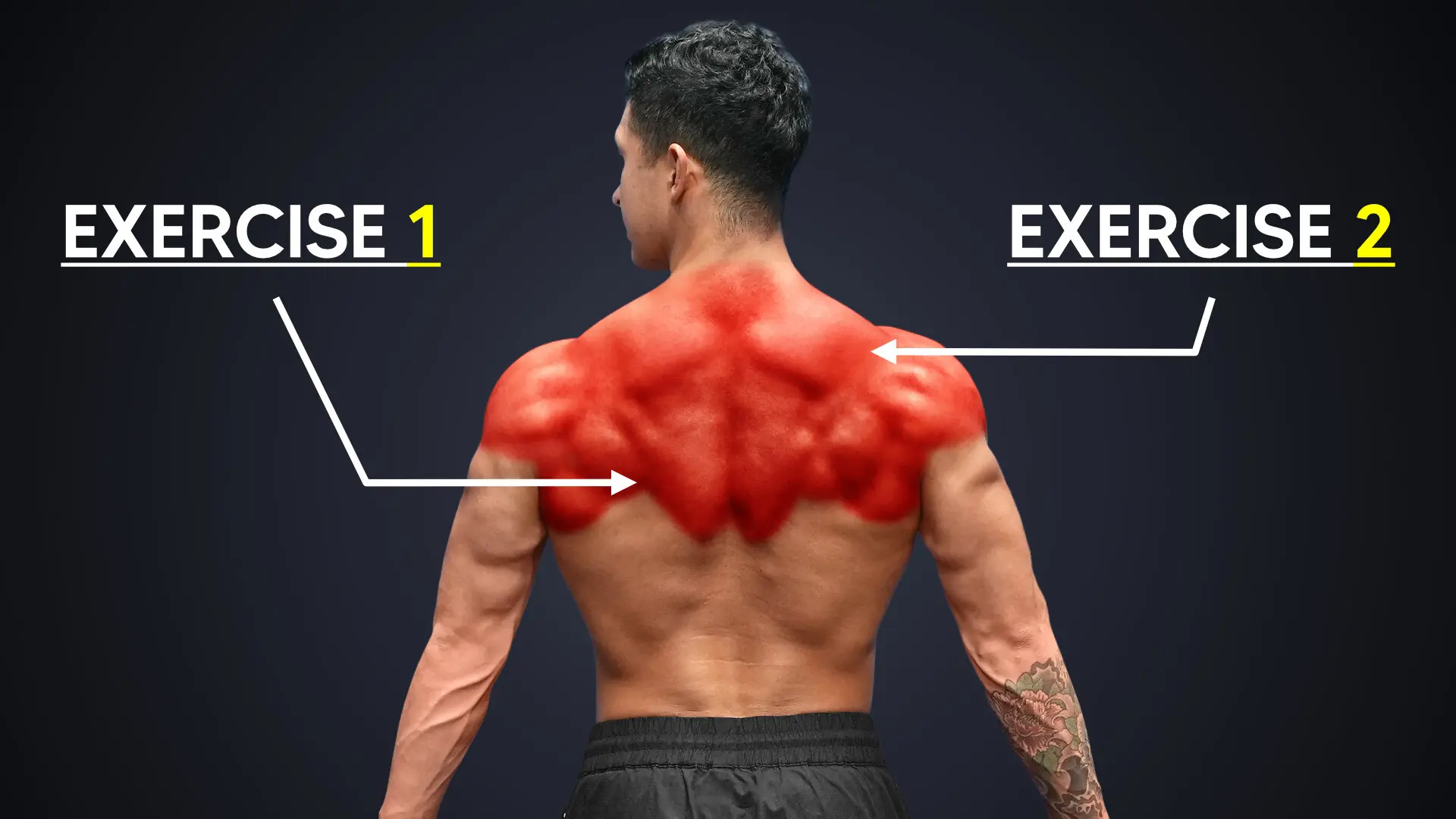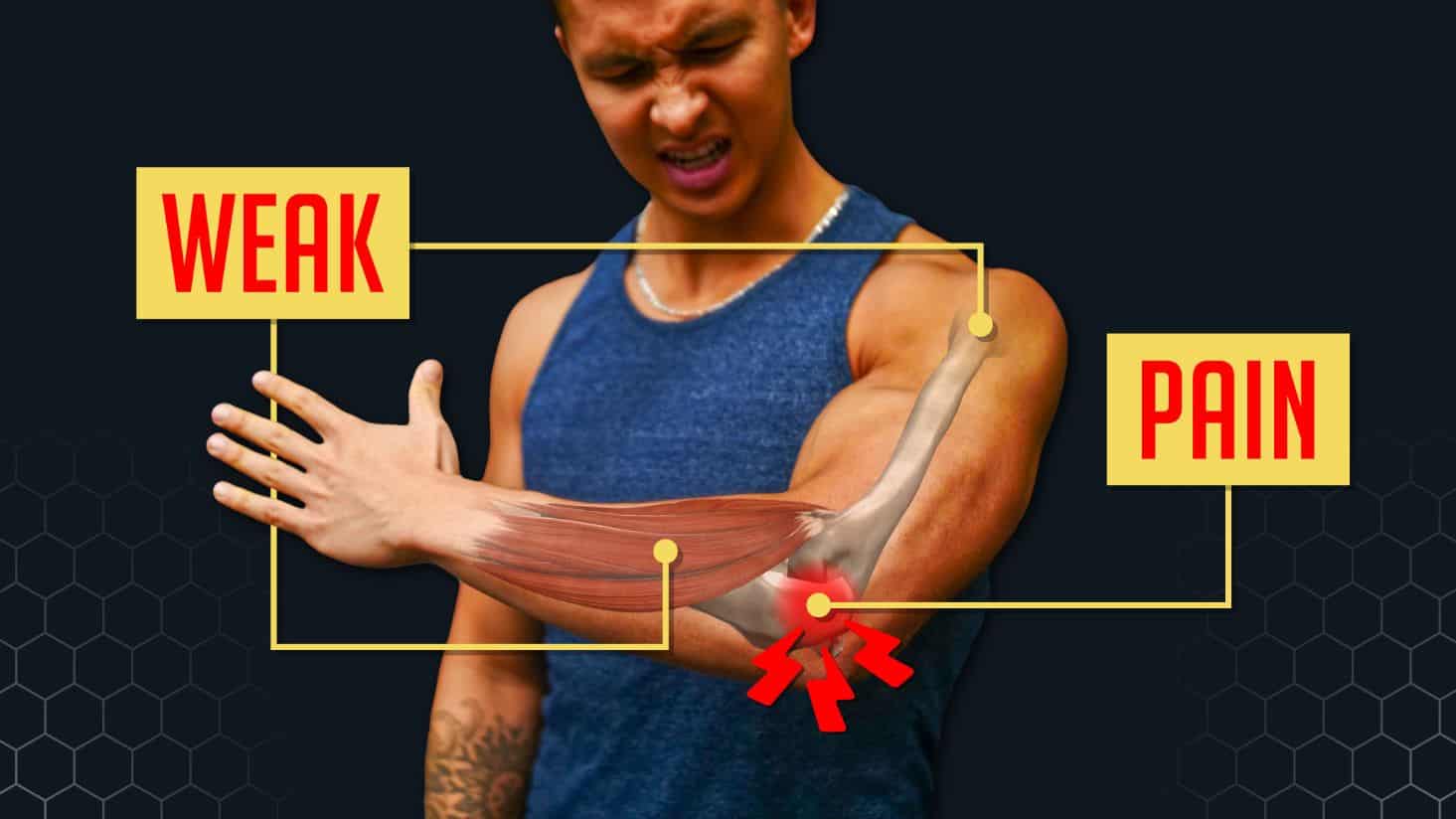
What's Up With Your Elbow Pain (And How To Fix It)
Struggling with elbow pain? Then you don't want to miss this article. Here, I cover the causes of elbow pain - and how you can fix it.
We don’t realize it, but every set and every rep we do adds to the stress that we place on our body, and it’s not just muscles that take a beating. Our joints take on a lot of that stress too and often become sites of discomfort. And one of the most common areas where this discomfort and pain occurs is at the elbow.
Why? Well, it all comes down to how complex this joint really is. And, therefore, how often it’s involved during our exercises. Elbow pain can manifest in 2 ways:
- On the inside of the elbow, OR
- At the outside of the elbow (more common)
Now, I’ve personally experienced elbow pain before. And I know it’s not fun. It hinders our training, diminishes our performance, and it just plain hurts.
So, today I want to go over:
- 3 causes that are likely contributing to the pain in your elbow (both outside and inside) AND
- What you need to do to alleviate the pain and prevent it from coming back
... So that you can start lifting pain-free as soon as possible. Not to mention, protect this joint for life.
A short note before we begin: as the saying goes, prevention is always better than cure. That's why I design every BWS program carefully to ensure that it will not cause unnecessary stress to any of your joints - which can set your progress in the gym back (by months or even years!) If you're interested in transforming your physique in the most time-efficient and safe manner:
Click the button below to take my analysis quiz to discover the best program for you:
↓
Elbow Pain Causes
1) Forearm Imbalances/Weakness
The first culprit is an imbalance in your forearm strength and just weak grip strength in general. Study after study has consistently shown weak extensor muscles in the forearm as the main culprit for elbow pain. Research also cites “repetitive gripping” to be what can kick off your pain.
How Do Forearm Extensor Muscles Contribute To Elbow Pain?
Now, what makes these extensor muscles on the outside of our forearm more susceptible to overuse and discomfort? It all comes down to their heavy involvement during gripping. Because whenever we go to grab something, our flexor muscles on the inside of our forearm will first help flex to grip the hand. But our extensor muscles then kick on and stay on in order to prevent our wrist from excessively flexing. In fact, EMG studies have clearly shown that every extensor muscle in the forearm is firing during gripping movements. And also tend to be firing to a greater extent than our flexors are.
And the harder or longer you grip something or the heavier the object you’re gripping, the greater the stress that’s placed on the extensors and the tendon that attaches them to the outside of the elbow.
Meaning that if your extensors are weak due to a lack of forearm and/or grip training, then they’ll be much more susceptible to fatigue. And this can then result in an overuse injury from all of your gripping during your workouts. This overuse injury then manifests as pain on the outside of the elbow. That's right in the tendon that is connecting the extensor muscle.
So strengthening your forearms, especially your extensors, as well as increasing your overall grip strength is what’s key to creating bullet-proof elbows. In fact, research has consistently shown this to be an effective approach to relieving elbow pain.
How To Strengthen Your Forearms
And the simplest way to start out is to regularly perform standard wrist extensions. Doing so will help strengthen and build more endurance in your weaker wrist extensors. Use a lighter weight and aim for a few sets of about 10 reps. Then, increase the weight over time. That is, as long as you’re able to do so without increasing pain.
Take note that your approach will have to change if the pain you experience is on the inside of your elbow rather than on the outside. In this case, you’d want to perform wrist curls instead of wrist extensions. Doing so will help build the endurance of your wrist flexors since in this case you have the opposite imbalance.
Then eventually, if you can do so without increasing pain, you’ll want to then progress to more functional movements. A good example would be the single-arm suitcase carry. The neutral wrist position of this exercise makes it easier for your elbow to tolerate. And it can help you build your overall grip strength and endurance over time.
Perform a few sets of these exercises once per day. But I'd suggest playing around with the volume and frequency to avoid increasing any pain. As your forearm and grip strength improves, you should gradually experience more elbow pain relief as a result.
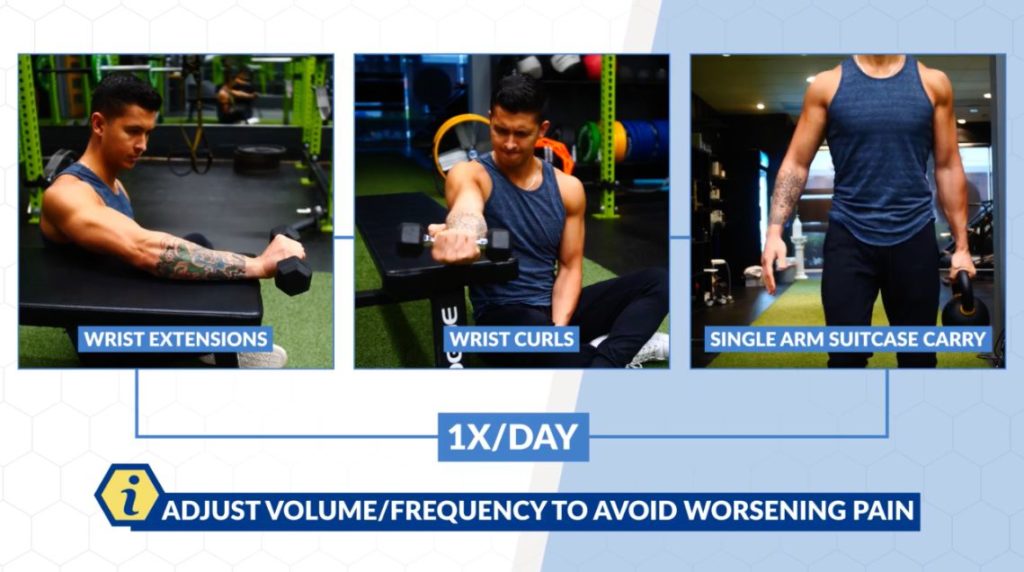
2) Poor Shoulder & Scapular Stability
So, we have addressed a problem below the elbow. But now we need to look above the elbow for some other possible problems. And the most common culprit here is a weakness in the muscles involved in stabilizing the shoulder and scapula. Because a lack of stabilization here forces the muscles surrounding your elbow joint to compensate. They'll have to work harder for the lack of stability during our pushing and pulling exercises. And this, again, leads to elbow pain due to overuse and overdependence on these forearm muscles.
A case study by Bhatt and colleagues showed just how drastic this can be. In this case study, a patient with elbow pain in one arm was found to be weak in their middle and lower traps. This weakness resulted in one of their shoulder blades to sit in an off position. Guess what? This off-positioned shoulder blade just so happened to be on the same side as their painful elbow!
After completing a strengthening program focusing completely on these muscles, the shoulder blade sat back in the correct position. And the elbow pain was completely eliminated. Many other studies have shown similar results. In other words, there is a strong association between shoulder and scapular instability and resulting elbow pain.
So, realize the importance of these often overlooked muscles especially when it comes to fixing and preventing elbow pain.
Ultimately, there are always fixes you can use to start lifting pain-free again. However, picking the right corrective exercises can be tricky – and this is where our 3-on-1 coaching program comes in. You’ll have a dedicated coach assigned to you (plus myself and a dietitian) to guide you every step of the way, so you never have to feel lost about your training. To find out more:
Click the button below to find out more about the 3-on-1 coaching program:
↓
How To Address Poor Shoulder And Scapular Stability
And I have put out quite a few articles that address these muscles (for example, here). But some of the best exercises for you to get started with for elbow pain would be:
- Scapular pull-ups to help strengthen the traps, then
- Simple external rotation movements to help strengthen your rotator cuff
Again, perform these moves daily or at least a few times per week. Over time, the increase in stability will help reduce the demands placed on your elbow. And help alleviate the pain you may be experiencing.
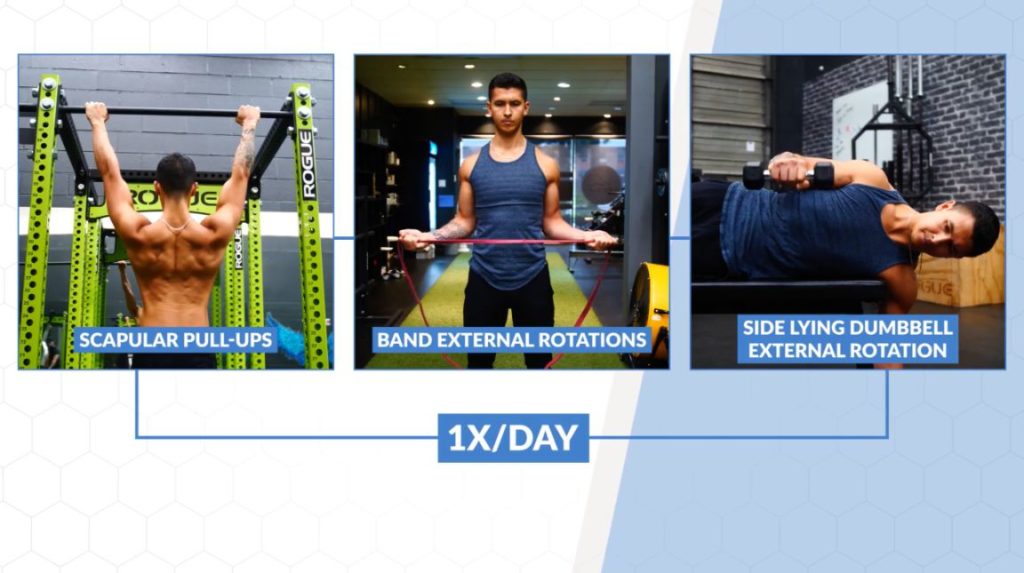
3) Overuse/Pushing Through
The last cause of elbow pain, or the worsening of your existing elbow pain, is often due to just trying to “push through the pain”. We NEED to listen to our bodies. When you feel discomfort in your joints, don’t ignore it. The thing with overuse injuries is that by the time you feel pain, it has already been overused. And continuing to train is just going to make it worse. Not to mention, possibly cause more severe problems!
You Don't Have To Stop Training
The good news though, is that as long as the pain is minimal, we don’t need to completely stop training. Instead, we just need to opt for less stressful variations of our exercises to give those tendons a break.
For this reason, dumbbells will become your best friend. They allow you to manipulate your hand position into basically any position that feels comfortable. Basically, we want to take our hands out of a supinated or pronated position. And, instead, into a neutral grip as much as possible.
A neutral grip:
- Places the least stress on our forearm muscles AND
- Eliminates our tendency to excessively flex and extend our wrist as we perform our exercises
So opting for exercises like hammer curls, dumbbell rows, and neutral grip chest presses are all great options. These exercises help take our grip out of a pronated or supinated position.
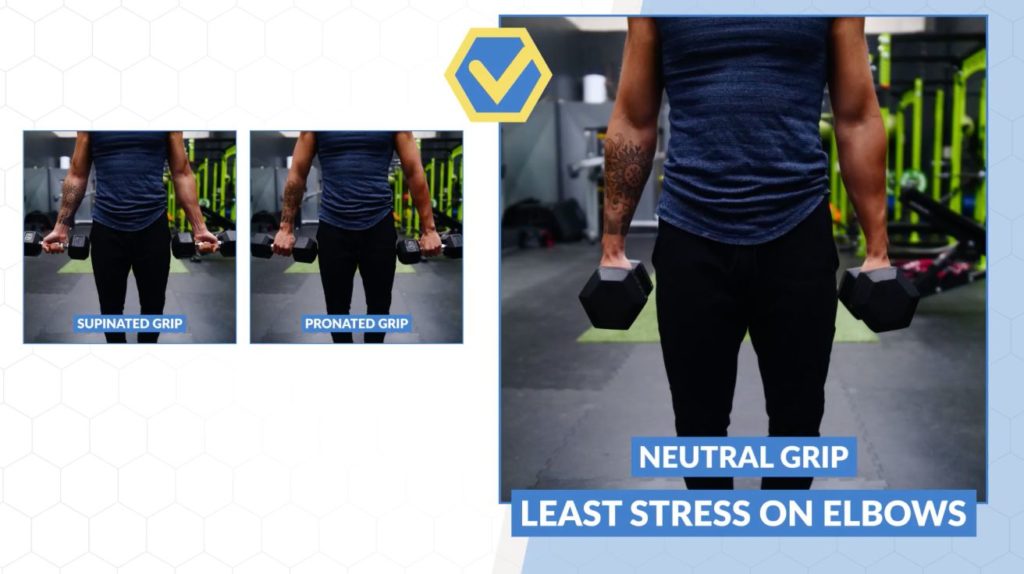
In addition to this, always be mindful of your wrist positioning during your exercises. Avoid flexing or extending your wrists excessively during exercises like chin-ups, curls, and even pushdowns. Excessive flexing and extending create a ton of stress on the forearm muscles and tendons. Instead, focus on keeping the wrist neutral and in line with your forearms as you perform these movements.
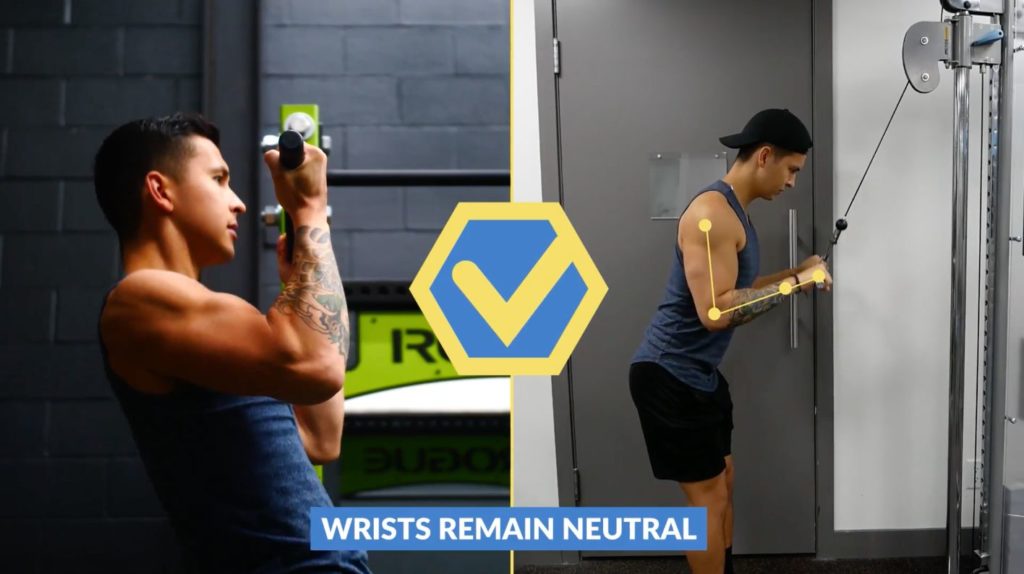
And if it still hurts, try something else. Or consider decreasing the weight and aiming for higher reps instead. There are plenty of ways that you can work around your elbow pain to continue stimulating your muscles and getting good workouts in while letting the overused muscles in your forearms recover.
How To Fix Elbow Pain: Takeaway
To sum up the article, here’s what you want to do:
First, dedicate more time to your forearm training and grip training.
Pain on outside of elbow = Wrist extensions: 3 sets of 10 reps
Pain on inside of elbow = Wrist curls: 3 sets of 10 reps
Suitcase carries: 3 sets of 30s walks each side
Then, address potential weaknesses in your shoulder and scapular stabilizer muscles.
Scapular pull-ups: 3 sets of 10 reps
External rotation exercise: 3 sets of 5-10 reps
And finally, manipulate your exercises and be mindful of your wrist positioning to avoid worsening the pain.
Implement more neutral grip exercises: Hammer curls, neutral grip presses, neutral grip rows, etc.
But all in all, you need to realize that if you’re feeling stress in certain joints then it’s often a result of imbalances or weaknesses elsewhere in the body. And for a step-by-step program that prevents this from happening by showing you exactly how to train to maximize growth while correcting your imbalances and weaknesses in the process, then:
Click the button below to take my analysis quiz to discover the best program for you:
↓
Don’t forget to give me a follow and connect with me on Instagram, Facebook, and Youtube as well, in order to stay up to date with my content.


